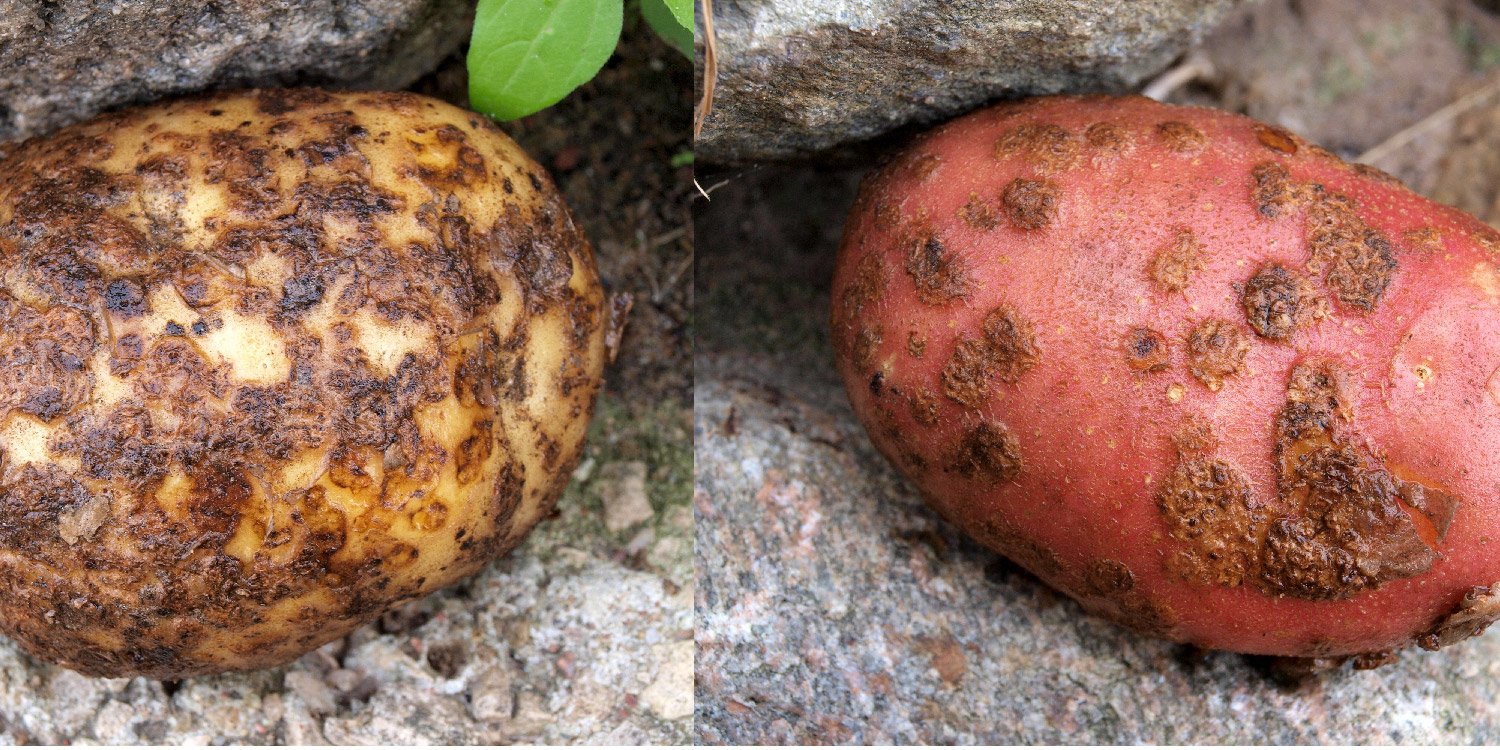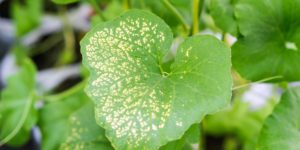Potato scab is a caused by a bacterium-like organism called Streptomyces scabies. It is a common tuber disease which occurs throughout the potato growing regions of the world. Economic losses are highest when tubers meant for table stock are infected, because the general appearance is very important for this market.
While superficial scab lesions may not greatly affect the marketability of processing potatoes, deep-pitted lesions increase peeling losses and detract from the appearance of the processed product.
The bacterium, Streptomyces scabies, thrives in soils with a pH above 5.5 and temperatures between 10-31 degrees centigrade. The growing conditions needed by potatoes are very close to the conditions that scab prefers.
The occurrence of scab and its severity varies by season and from field to field.
Life Cycle and Survival
scabies is a soil bacterium which can remain in the soil for long periods as long as decaying plant matter is left behind. The pathogen can also survive in lesions on tubers in storage, but the disease does not spread or increase in severity then.
It is transmitted to plants by infected seed tubers, wind and water. The organism is also spread in fresh manure, since it can survive passage through the digestive tract of animals.
scabiesenters through pores/lenticels in stems, through wounds and directly through the skin of young tubers where it initiates infection.
Inoculum from infected seed tubers can produce disease on progeny tubers the next season.
Infection & Symptoms
scabies mostly infects young developing tubers through the lenticels and occasionally through wounds.
Initial infections cause development of reddish-brown spots/lesions on the surface of tubers. As the tubers grow, these lesions expand, becoming corky and necrotic. The lesions can affect just a small portion of the tuber surface, or may completely cover it. Sometimes the ridged portions are in broken concentric rings.
Individual scab lesions are circular but may coalesce into large scabby areas.
The type of lesion usually depends on the host resistance, aggressiveness of the pathogen strain, time of infection, and environmental conditions.
Depending on the extent of the damage, these potatoes may still be edible once the scab is removed, but they’re definitely not fit for the farmer’s market.
In severe cases infection causes deep pitting and cracking, which allows for the entry of secondary pests and diseases into the tuber’s flesh.
Management & Control
Chemical method
Use of copper-based fungicides helps in controlling common scab disease. These insecticides are more effective when drenched into the soil.
They include;
- TRINITY GOLD 425WP
- GREENCOP 500WP
- COLONIZER 440WP
NOTE;
- Spraying OPTIMIZER helps in boosting the plant’s immunity.
- PYRAMID 700WP helps in suppressing the activity of the bacterium within the plant.
- Whenever spraying any fungicide, it is advisable to mix it with INTEGRA 3ml/20l. This improves the efficacy of the fungicide.
Non-chemical control methods
They include;
- Use of resistant varieties in fields where scab is a problem
- Use of certified and scab-free seed
- Prevent introduction of the pathogen into fields
- Seed treatment
- Do not overwater the garden
- Crop rotation with non-host crops
- Maintenance of soil pH levels between 5.0-5.2 by using acidic fertilizers.
- Avoiding moisture stress during the 2-6 weeks following tuberization.






